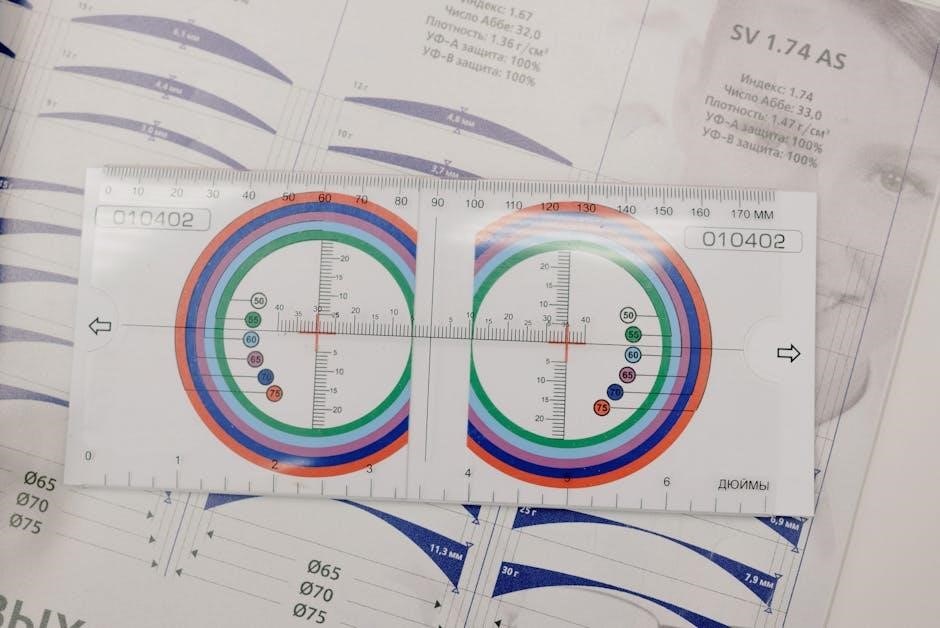High-impact instructional practices in mathematics are essential for fostering a deeper understanding and engagement among students. These practices emphasize critical thinking, problem-solving, and real-world applications, ensuring students develop robust mathematical literacy. By integrating effective teaching methods and aligning with educational standards, educators can create a supportive and challenging learning environment that prepares students for future success.
1.1 Defining High-Impact Practices
High-impact practices in mathematics are evidence-based teaching strategies that significantly enhance student learning outcomes. They involve active participation, critical thinking, and problem-solving, aligning with educational standards; These practices incorporate manipulatives, digital tools, and real-world applications to deepen understanding. By focusing on research-supported methods, educators create engaging and inclusive learning environments that cater to diverse student needs, fostering equity and improved academic performance.
1.2 The Importance of Effective Instructional Strategies in Math Education
Effective instructional strategies in mathematics are crucial for addressing learning gaps and promoting equity. They enable students to connect abstract concepts with real-world applications, fostering critical thinking and problem-solving skills. By leveraging research-based methods, educators can ensure all students, regardless of background, develop a strong mathematical foundation. This approach not only enhances academic performance but also prepares students for future challenges in an increasingly complex world.
Problem-Solving and Critical Thinking in Mathematics
Problem-solving and critical thinking are cornerstone skills in mathematics, enabling students to analyze challenges, explore multiple solutions, and apply logical reasoning. These skills are vital for developing mathematical proficiency and preparing students to tackle complex, real-world problems with confidence and creativity.
2.1 Teaching Students to Analyze and Restate Mathematical Problems
Teaching students to analyze and restate mathematical problems is a foundational skill that enhances understanding and problem-solving abilities. By breaking down complex problems into manageable parts, students can identify key information, clarify uncertainties, and develop a clear strategy. This process fosters critical thinking and reduces errors, encouraging students to approach challenges with confidence and precision.
2.2 Developing Multiple Solution Strategies and Critical Thinking
Encouraging students to explore multiple solution strategies cultivates critical thinking and adaptability in mathematics. By analyzing problems from different angles, students deepen their understanding and build resilience. Visual and digital tools, like GeoGebra, can aid in visualizing these strategies, promoting a richer grasp of mathematical concepts and enhancing overall problem-solving proficiency.
Use of Manipulatives and Visual Tools in Math Education
Manipulatives and visual tools enhance mathematical understanding by making abstract concepts tangible. They engage students, promote hands-on learning, and cater to diverse learning styles effectively.
3.1 The Role of Manipulatives in Enhancing Understanding
Manipulatives, such as blocks, counters, and geometric shapes, provide hands-on experiences that bridge abstract math concepts to concrete representations. They enable students to explore, visualize, and internalize mathematical relationships, fostering deeper comprehension. By allowing tactile engagement, manipulatives cater to diverse learning styles, making complex ideas more accessible and promoting active participation in the learning process.
3.2 Integrating GeoGebra and Other Digital Tools for Interactive Learning
GeoGebra and other digital tools offer interactive platforms for visualizing mathematical concepts, enhancing engagement and understanding. These tools enable students to explore relationships between shapes, graphs, and algebraic expressions dynamically. By providing real-time feedback and fostering experimentation, they create a collaborative and immersive learning environment that supports diverse learning styles and deepens mathematical insight.

Formative Assessments and Feedback in Mathematics
Formative assessments and feedback are crucial for monitoring student progress and guiding instruction. They provide insights into learning gaps, enabling timely interventions and personalized support.
4.1 Implementing Formative Assessments to Monitor Progress
Formative assessments are essential for monitoring student progress and understanding in mathematics. These ongoing evaluations help identify learning gaps, allowing teachers to adjust instruction and provide targeted support. Techniques such as quizzes, class discussions, and observational checks enable educators to gather valuable insights, ensuring students stay on track and mastering key concepts effectively throughout the learning process.
4.2 Providing Constructive Feedback to Improve Learning Outcomes
Constructive feedback is a powerful tool for enhancing student learning in mathematics. By providing clear, specific, and timely feedback, teachers help students understand their strengths and areas for improvement. This guidance enables learners to refine their problem-solving skills and build confidence. Feedback should also encourage self-assessment and reflection, fostering a growth mindset and promoting deeper mathematical understanding and mastery over time.

Collaborative Learning and Real-World Applications
Collaborative learning engages students in group problem-solving, fostering teamwork and communication. Connecting math to real-world scenarios makes learning relevant and prepares students for practical applications.
5.1 Encouraging Peer Collaboration in Math Problem Solving
Encouraging peer collaboration in math problem-solving fosters active learning and teamwork. Students share insights, explore methods, and learn from one another’s strengths. Collaborative environments build confidence and enhance problem-solving skills. Teachers facilitate group dynamics, ensuring inclusive participation; This approach strengthens mathematical understanding and prepares students for real-world scenarios.
5.2 Connecting Mathematics to Real-World Scenarios
Connecting mathematics to real-world scenarios makes learning relevant and engaging. By illustrating practical applications in various careers and everyday situations, students develop a deeper understanding of mathematical concepts. This approach enhances problem-solving skills and prepares learners for future challenges, fostering a meaningful connection between academic studies and real-life experiences.

Professional Development for Teachers
Professional development for teachers is crucial for enhancing instructional effectiveness in mathematics. Continuous learning and training enable educators to adopt innovative strategies, improving student outcomes and teaching quality.
6.1 Best Pedagogical Practices for Teaching Mathematics
Best pedagogical practices in mathematics involve integrating manipulatives, digital tools like GeoGebra, and real-world applications to enhance engagement. Using children’s literature and problem-solving activities fosters critical thinking. Continuous teacher training and professional development are essential for adopting innovative methods, ensuring educators stay updated on evidence-based strategies to improve student outcomes and teaching effectiveness in mathematics education.
6.2 The Role of Teacher Training in Improving Student Performance
Teacher training plays a pivotal role in enhancing student performance by equipping educators with evidence-based instructional strategies. Professional development programs help teachers refine their methods, incorporate technology, and address diverse learning needs. Ongoing training ensures educators align their practices with educational standards, fostering a more effective and engaging learning environment that directly impacts student achievement and mathematical proficiency.
Addressing Learning Gaps and Equity in Math Education
Identifying and addressing learning gaps ensures all students receive tailored support. Equity-focused practices promote inclusive instruction, fostering equal opportunities for mathematical success and engagement among diverse learners.
7.1 Identifying and Bridging Gaps in Mathematical Knowledge
Diagnostic assessments and progress monitoring help identify learning gaps in mathematical understanding. Targeted interventions, such as scaffolded instruction and technology-enhanced resources, bridge these gaps. Aligning teaching strategies with educational standards ensures comprehensive coverage of math concepts. Equitable access to resources and personalized support fosters inclusivity, enabling all students to build a strong mathematical foundation and achieve academic success.
7.2 Ensuring Equity Through Inclusive Instructional Practices
Equity in math education involves creating inclusive environments where all students, regardless of background or ability, can thrive. Differentiated instruction, culturally responsive teaching, and accessible resources ensure diverse learning needs are met. Professional development for teachers and the use of assistive technologies further promote equity, fostering a culture of belonging and maximizing opportunities for mathematical success for all students.

The Role of Technology in Enhancing Math Instruction
Technology enhances math instruction by providing interactive tools like GeoGebra and EdTech resources, fostering engagement and deeper understanding of mathematical concepts through visual and dynamic representations.
8.1 Using EdTech Resources to Support Math Learning
EdTech resources, such as GeoGebra and interactive learning platforms, provide dynamic visualizations and real-time feedback, making complex mathematical concepts more accessible and engaging for students. These tools enable personalized learning experiences, allowing students to explore problems at their own pace and deepen their understanding through interactive simulations. Integrating EdTech enhances traditional teaching methods and supports diverse learning needs effectively.
8.2 Evaluating the Effectiveness of Digital Tools in Mathematics
Evaluating digital tools involves assessing their alignment with learning goals, ease of use, and impact on student outcomes. Criteria include engagement, real-time feedback, and support for diverse learners. Evidence-based methods, such as student performance data and teacher feedback, help determine tool efficacy. Regular evaluation ensures resources are effective, fostering informed decisions and improving math education quality.
High-impact practices in math education emphasize equity, critical thinking, and real-world applications. Future directions include integrating advanced technologies and innovative teaching strategies to enhance student outcomes and engagement.
9.1 Summarizing Key High-Impact Practices
Key high-impact practices in math education include using manipulatives, integrating digital tools like GeoGebra, and implementing formative assessments. Encouraging collaborative learning, providing constructive feedback, and connecting math to real-world scenarios are also essential. These strategies foster critical thinking, equity, and deep understanding, ensuring students develop robust mathematical literacy and problem-solving skills for lifelong success.
9.2 Moving Forward with Evidence-Based Instructional Strategies
Advancing math education requires adopting evidence-based practices, prioritizing teacher training, and leveraging technology. Continuous innovation and research ensure instructional strategies remain effective. By focusing on equity, critical thinking, and real-world relevance, educators can create a sustainable foundation for student success, fostering a culture of lifelong learning and adaptability in an evolving world.